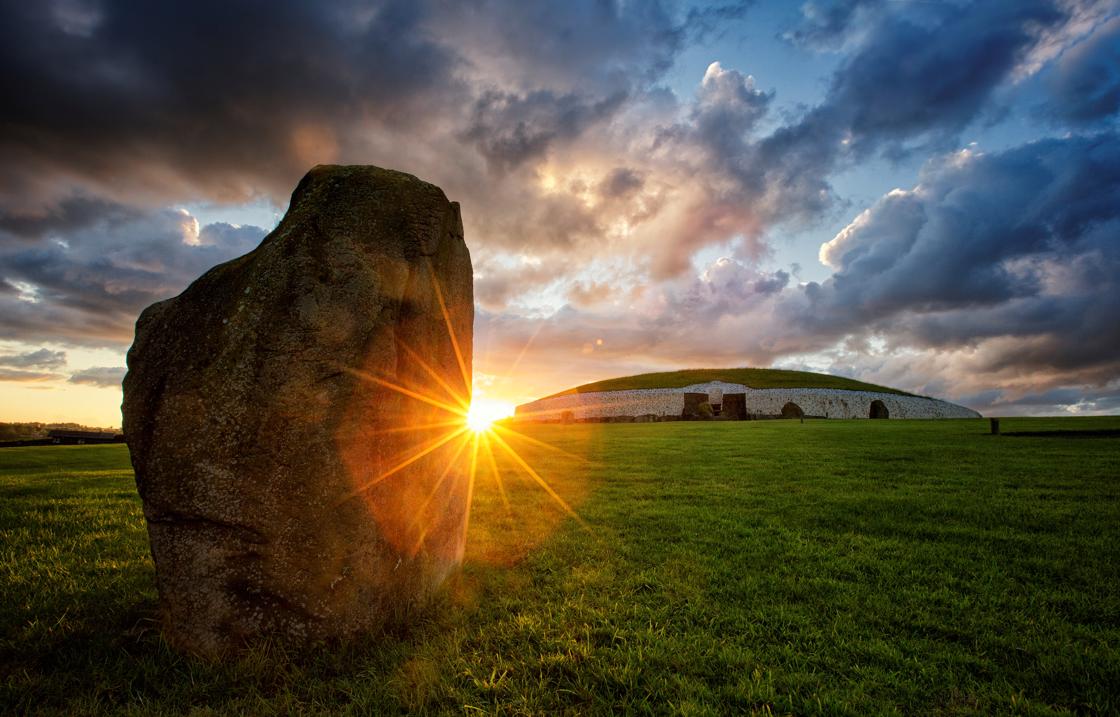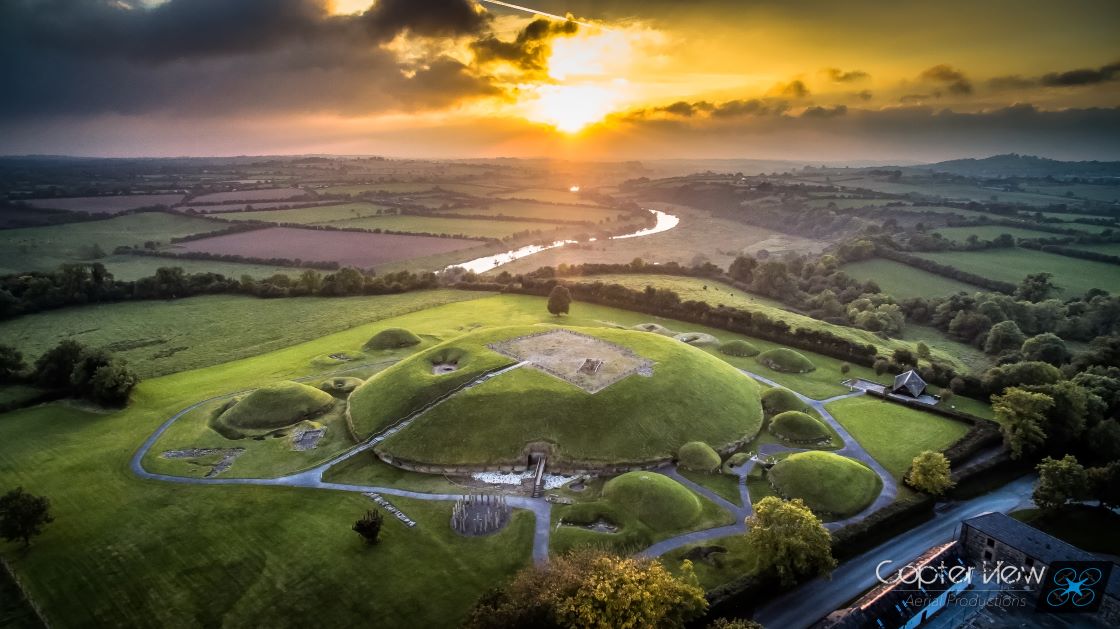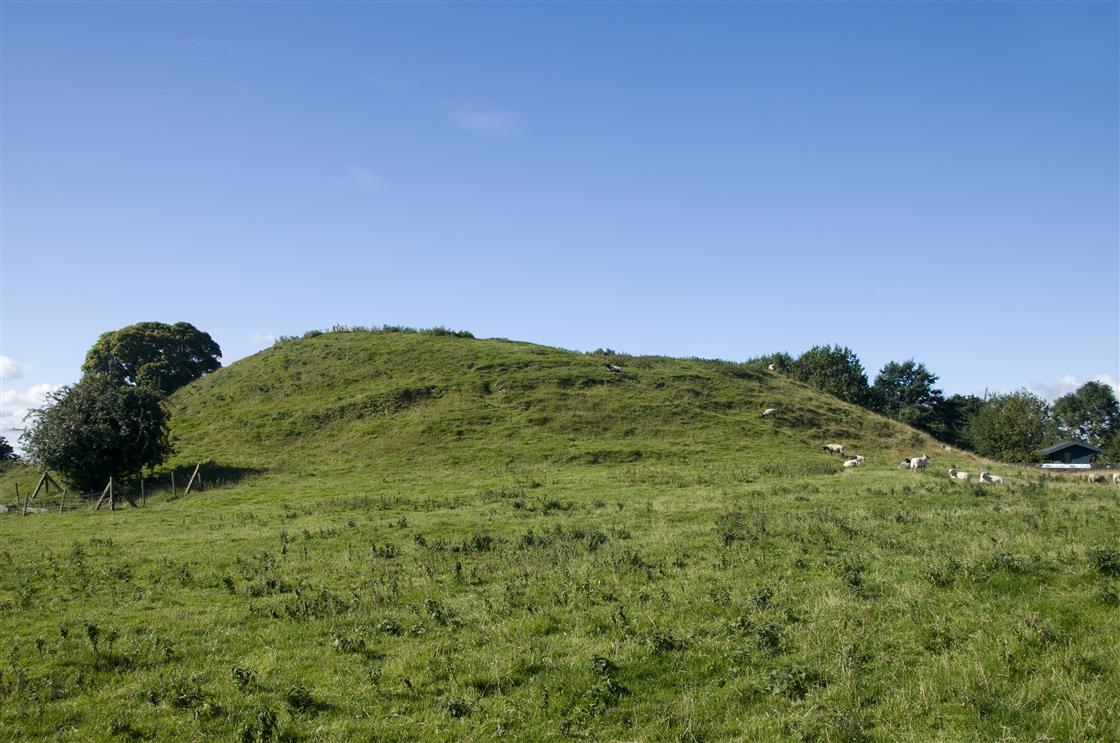The UNESCO World Heritage Site of Brú na Bóinne is Ireland’s richest archaeological landscape and is situated within a bend in the River Boyne. Brú na Bóinne is famous for the spectacular prehistoric passage tombs of Knowth, Newgrange and Dowth which were built circa 3200BC. These ceremonial structures are among the most important Neolithic sites in the world and contain the largest collection of megalithic art in Western Europe.
Brú na Bóinne – Newgrange, Knowth and Dowth
Ireland’s richest archaeological landscape.

The Visitor Centre exhibition is a fully interactive visitor experience exploring the Neolithic culture, landscape and monuments of Brú na Bóinne.
Pre-booking tickets is essential for visiting the monuments. Pre-booking for the Visitor Centre only is not required.
Directions
Address: Donore, Drogheda, Co. Meath, A92 EH5C.
Brú na Bóinne Visitor Centre (Eircode A92 EH5C) is the starting point for all visits to Newgrange and Knowth. Do not go directly to the monuments as you will not gain entry. Visitors are brought via shuttle bus to the monuments.
From Navan: Take the turn for Duleek and veer left for the Boyne Road. Once you reach the N2 junction, take a right and sharp left for the Brú na Bóinne Visitor Centre
From Drogheda: Take the Donore Road from the Bus Station which is located just off the N1 on the south side of the River Boyne. Travel about 7km (4.5 miles) to the village of Donore, turn right passing Daly's Brú na Bóinne Bar and Restaurant on the right, travel about 1km, the Visitor Centre cark park is on the right hand side.
Bus Route(s): Bus Eireann operates a bus service between the Visitor Centre and Drogheda. This service runs in conjunction with the service to Drogheda from Dublin. Contact Bus Eireann, Travel Centre +353 1 8366111 or +353 41 983 5023.
Via the M1 Motorway: Take the M1 heading north, leave the motorway at the Donore Exit near Drogheda, (Brú na Bóinne is clearly signposted before the exit). There is a toll of 1.50 Euro before the Donore exit. Travel about 6km (4 miles) to the village of Donore, turn right passing Daly's Brú na Bóinne Bar and Restaurant on the right, travel about 1km, the Visitor Centre cark park is on the right hand side.
From Dublin: Take the N2 north via Ashbourne towards Slane. Turn right about 2km south of Slane.
From Trim: Take the R161 to Navan and follow directions from Navan.From Slane: take the N2 Ashbourne route from Slane, turn left approx 2 km outside of Slane and follow the signs for Brú na Bóinne.
Opening Times and Prices
See website for up-to-date opening times and prices. Access to Newgrange and Knowth is only via the Brú na Bóinne Visitor Centre.
Newgrange

Newgrange (c 3,200 B.C.) is the best-known monument of the World Heritage Site of Brú na Bóinne, predating the main pyramids at Giza by 400 years and the main trilithon phase of Stonehenge by about 500-700 years. The passage tomb is surrounded by 97 kerb stones, the most impressive is the large entrance stone which is covered in swirls and designs. Inside the large mound there is a long passage leading into a chamber which branches off three ways. The corbelled roof inside the burial chamber it still watertight and supports an estimated 200,000 tonnes of cairn. The cremated remains of the dead were laid on large stone basins inside the chamber which usually were accompanied by grave goods.
At dawn on the winter solstice, the shortest day of the year (December 21st), a shaft of sunlight enters the chamber of Newgrange through a specially designed opening over the doorway which illuminates the Chamber. On December 21st 1967, Professor MJ O'Kelly was the first person in modern times to see this now world famous event.
Knowth

The passage tomb complex lies to the west of Newgrange. The large mound covers two passage tombs placed back to back which is surrounded by 127 massive kerbstones. Outside this large passage tomb there are eighteen small tombs.
Over three hundred decorated stones make up Knowth which represents the greatest concentration of megalithic art in Western Europe. Recurring motifs on these stones include circles serpentine forms and spirals. Knowth continued in use through the centuries, variously as a burial site in the Bronze and Iron ages, a royal site in the early medieval period and a manor farmhouse in the later medieval period. A new exhibit at Knowth explores the megalithic art of the Boyne Valley, and the story of the archaeologists who discovered it, led by the late Prof George Eogan.
Dowth

Dowth is the least well known of the other two although it compares in size. The mound is surrounded by a kerb of 115 stones and has two tombs facing westwards. On the 21st of December, the rays of the setting sun illuminate this passage and circular manner in manner similar to the winter solstice at Newgrange. At least thirty-eight of the stones at Dowth contain megalithic art, the circle meaning the most common motif used.
There is no access to the interior of the Dowth Mound, but visitors may still walk around the outside and admire the monument and views.